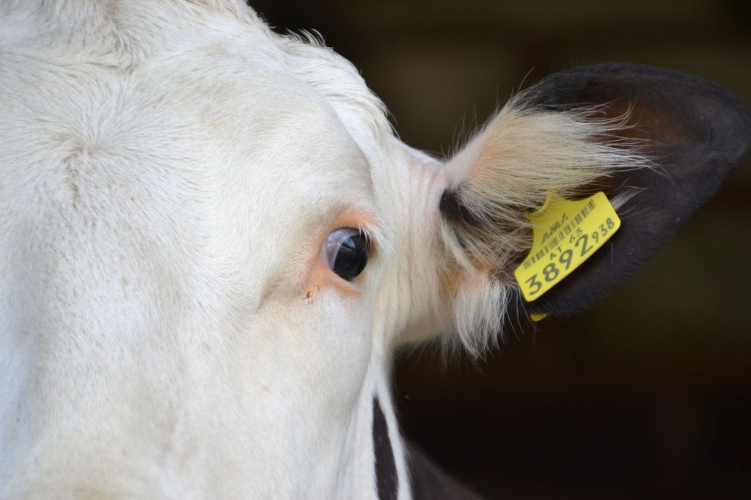Navigating Highly Pathogenic Avian Influenza (HPAI) in Dairy Cows: Essential Insights for Organic and Alternative Producers
Sourse: The DairyNews
The recent detection of Highly Pathogenic Avian Influenza (HPAI) in dairy cattle across multiple states in the United States has raised concerns among organic and alternative producers. Understanding the implications and preventive measures against this disease is crucial for safeguarding livestock and ensuring food safety.

In Texas, dairy cattle exhibiting unusual symptoms, such as a sudden decline in milk production, thickened milk consistency resembling colostrum, and changes in manure consistency, prompted investigation. On March 25, 2024, the United States Department of Agriculture (USDA) confirmed these cases as HPAI.
As of April 1, 2024, confirmed cases of HPAI in dairy cattle have been reported in Texas (7), Kansas (2), Idaho, New Mexico (1), and Michigan (1). Evidence suggests that migratory waterfowl serve as the source of infection for dairy cows, although the exact mode of transmission remains undetermined.
What is HPAI, and how does it manifest in dairy cattle? HPAI, caused by avian Type A viruses, poses a significant threat to poultry and other animals. While rare in humans, it can have severe consequences for livestock. Symptoms in dairy cows include reduced milk production, altered milk consistency, appetite loss, and manure inconsistencies. Cows typically exhibit symptoms for 7-10 days before recovering, with about 10% failing to fully regain previous milk production levels, particularly those with severe symptoms.
Despite these challenges, pasteurized milk remains safe for consumption, as pasteurization effectively eliminates the virus. However, milk from infected cows should be discarded. Raw milk, on the other hand, poses a risk as the virus can be present. Thus, caution is advised, and unpasteurized milk or milk products should not be consumed or fed to animals on the farm.
Protecting cattle from HPAI requires stringent measures. Avoid introducing new cattle to the farm and minimize interactions with other dairy cattle. Steer clear of livestock auctions and sanitize clothing and footwear after farm visits. Restricting cattle movement and implementing quarantine protocols for symptomatic animals are essential preventive steps.
Furthermore, mitigating bird-cattle interaction is crucial. Employing bird deterrent tools can help prevent potential transmission routes. Producers are encouraged to collaborate closely with veterinarians to develop comprehensive prevention and response plans tailored to their farm's needs.
Amidst the HPAI threat, proactive measures and vigilant monitoring are paramount for organic and alternative dairy producers to safeguard animal health, ensure food safety, and maintain consumer confidence.
Use different tools to deter birds, some which can be found here.
As of April 1, 2024, confirmed cases of HPAI in dairy cattle have been reported in Texas (7), Kansas (2), Idaho, New Mexico (1), and Michigan (1). Evidence suggests that migratory waterfowl serve as the source of infection for dairy cows, although the exact mode of transmission remains undetermined.
What is HPAI, and how does it manifest in dairy cattle? HPAI, caused by avian Type A viruses, poses a significant threat to poultry and other animals. While rare in humans, it can have severe consequences for livestock. Symptoms in dairy cows include reduced milk production, altered milk consistency, appetite loss, and manure inconsistencies. Cows typically exhibit symptoms for 7-10 days before recovering, with about 10% failing to fully regain previous milk production levels, particularly those with severe symptoms.
Despite these challenges, pasteurized milk remains safe for consumption, as pasteurization effectively eliminates the virus. However, milk from infected cows should be discarded. Raw milk, on the other hand, poses a risk as the virus can be present. Thus, caution is advised, and unpasteurized milk or milk products should not be consumed or fed to animals on the farm.
Protecting cattle from HPAI requires stringent measures. Avoid introducing new cattle to the farm and minimize interactions with other dairy cattle. Steer clear of livestock auctions and sanitize clothing and footwear after farm visits. Restricting cattle movement and implementing quarantine protocols for symptomatic animals are essential preventive steps.
Furthermore, mitigating bird-cattle interaction is crucial. Employing bird deterrent tools can help prevent potential transmission routes. Producers are encouraged to collaborate closely with veterinarians to develop comprehensive prevention and response plans tailored to their farm's needs.
Amidst the HPAI threat, proactive measures and vigilant monitoring are paramount for organic and alternative dairy producers to safeguard animal health, ensure food safety, and maintain consumer confidence.
Use different tools to deter birds, some which can be found here.
Key News of the Week











